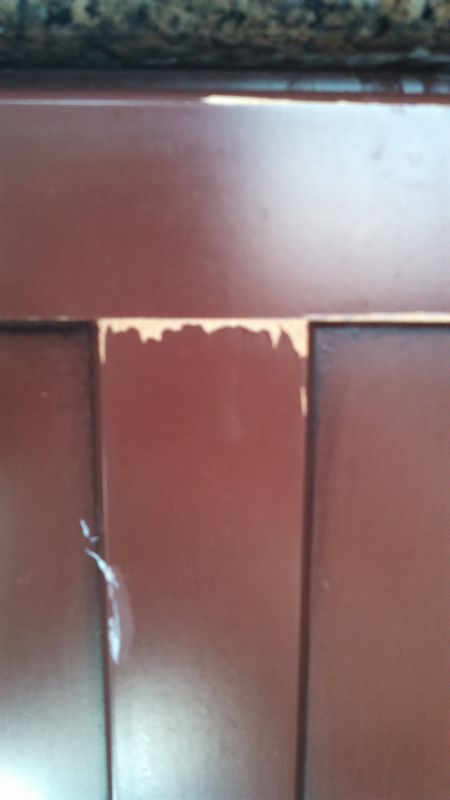Finishing Laser-Cut Edges
A manufacturer asks how to finish the charred edges of laser-cut Baltic Birch. April 14, 2005
Question
We manufacture items from Baltic birch that are cut by a laser. We are having trouble finding a finish that will cover the burn edges. Our efforts have been unsuccessful. We have good results with Deft and Minwax wipe-on poly on the flat surfaces but cannot get it to adhere to the burn edges. After the first coat, we rub the burn area and the burn residue still comes off on the cloth. The finish does not seem to stick. The burn area is sanded lightly prior to the finish. The finish we need has to be water resistant, easy to apply to hundreds of pieces per batch.
Forum Responses
(Finishing Forum)
From contributor C:
The burnt edges are just charcoal powder. There is *nothing* that will stick to them because they will just powder off, taking any sort of finish with them. You'll have to remove the charred part of the edges to get a finish on them. If you are in a high volume situation and making small parts, perhaps a tumble sander would do the work quickly. They tend to erode the edges first.
From contributor J:
Have you used de-waxed shellac? As said above, it's probably due to the carbon. I would look into some kind of brush that can quickly remove the dust without scoring the wood. I also would check into something that can be added or prevent the wood being burned as it is being cut by the laser. (What about freezing the wood?) I know that was dumb, but I'd try anything that could keep up with production.
From contributor J:
You need to outfit your laser cutter with a gas assist nozzle that can spray either nitrogen or argon gas where the laser is cutting. That way it stops the oxidation or burning of the wood to take place (removes the oxygen). No more burns, no more problem.
From contributor G:
Until you can rig the gas assist setup, I second the suggestion of dewaxed shellac - preferably bought in its flake form. Also, can you use a soft-stick tape over the cut line, or will the laser burn just gum everything up?
From the original questioner:
Thanks for your responses. The parts are too big for a sand tumbler. The average size is 4" x 10" x 1/8 or 1/4" Baltic birch. We are trying to figure out a brush technique to remove the burn.
Our laser rep says the gases will help a little, but not enough to justify their cost. There will still be burn. We've tried the dewaxed shellac and it takes 3 coats to get it to stop rubbing off. We haven't tried putting them in the freezer yet. We are willing to try anything, too.
The tape is called transfer tape. We haven't tried this. I think it would be an expensive way to go. It would help the surface, but would not have any effect on the edge burn. I am new at finishing. I don't understand the flakes for the dewaxed shellac.
Our best process is the finish sand and put a couple coats of something on it (sanding between coats) and then laser cut it, finish (seal) the edges and put a last coat on for a satin finish. Does anyone know of some kind of a buffer or flat sander that has fingers that would reach into small areas cut by laser? These areas are too small to get your fingers in to sand them.
From contributor J:
I would seriously consider calling in a new rep to ask this question to. The only way to prevent any burn in any situation here on earth is to remove the oxygen from the air, thus preventing oxidation. Any surface treatment is just that and it will only keep the top microlayer from burning (until that is heat dissipated), but does not protect underlying layers from being scorched. Yes, it is an expensive retrofit, but if you're doing production runs with this method, you cannot afford to be without it! If my blade is burning wood when I cut, I'd rather not spend the money sharpening. I'd rather look for something less expensive.
From contributor C:
There is a brush available for stripping (red bristles, white handle) that may help you. I think it is a Kleen Strip product. I get them at my local HD or Lowes. I have used them to remove char from SYP moldings that I torched to get a faux driftwood look. They have nice stiff scrubby bristles and come in a couple of sizes. If you have any extremely fine details you might get some help from a powered toothbrush. There are rotary brushes available for this sort of work, too. Check out suppliers of automated sanding equipment, as some of them do offer brushes for their sanding systems.
